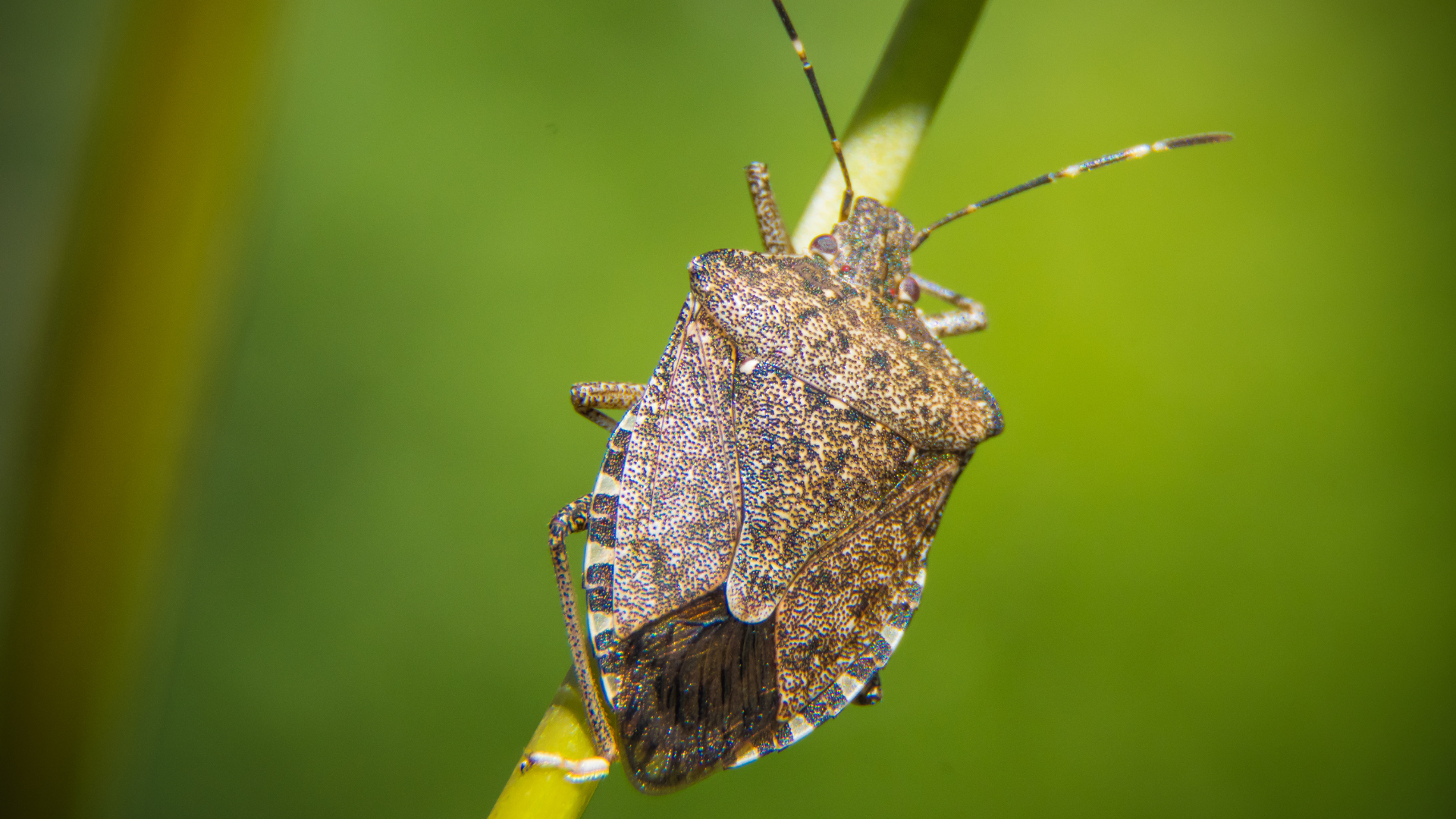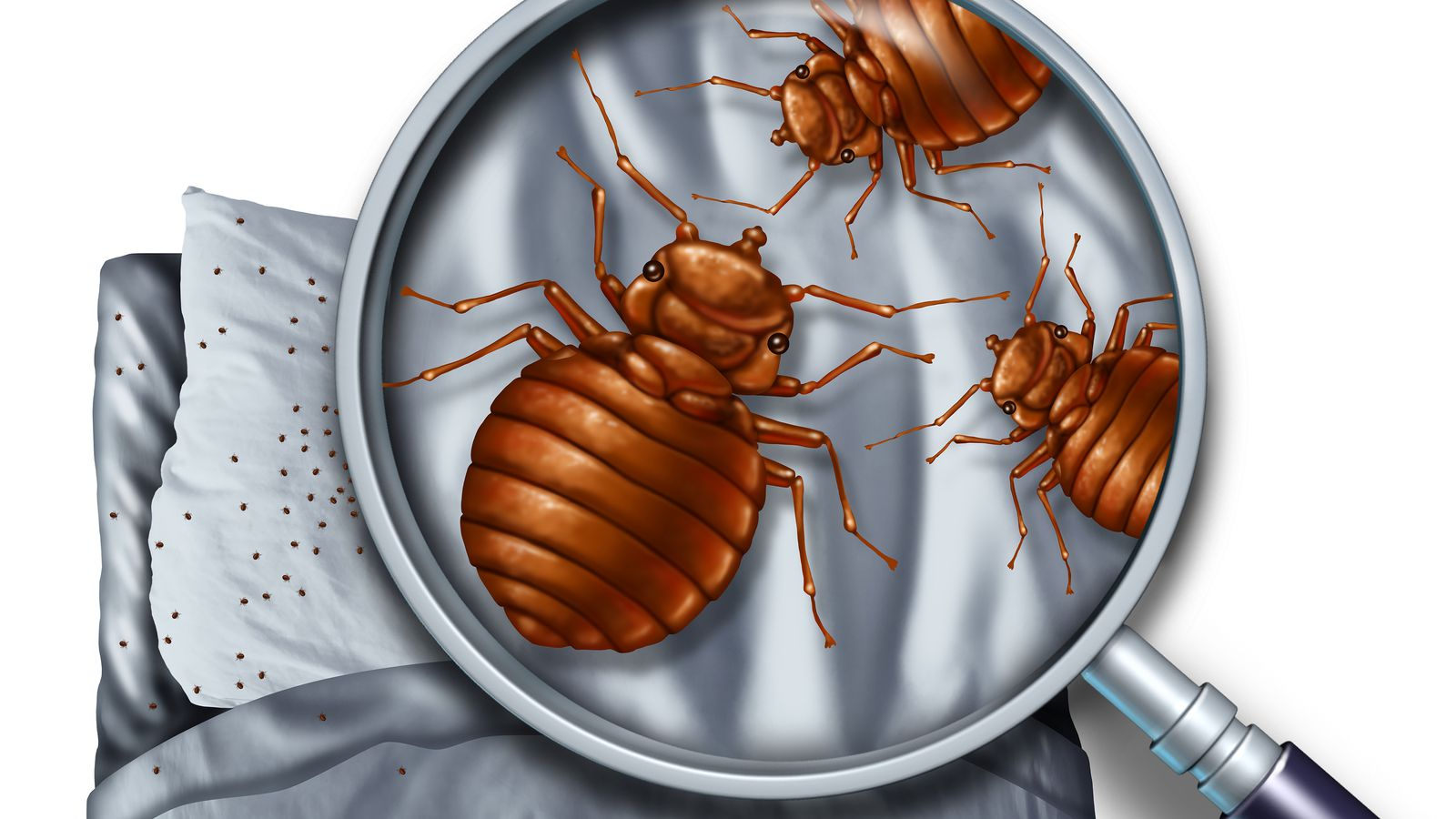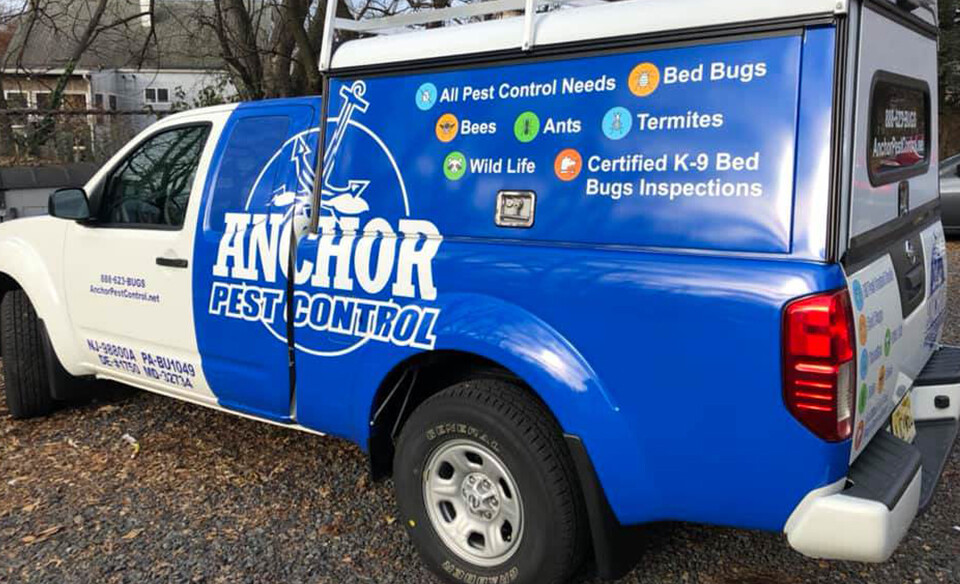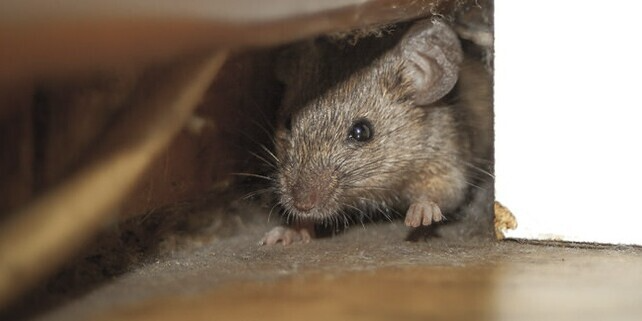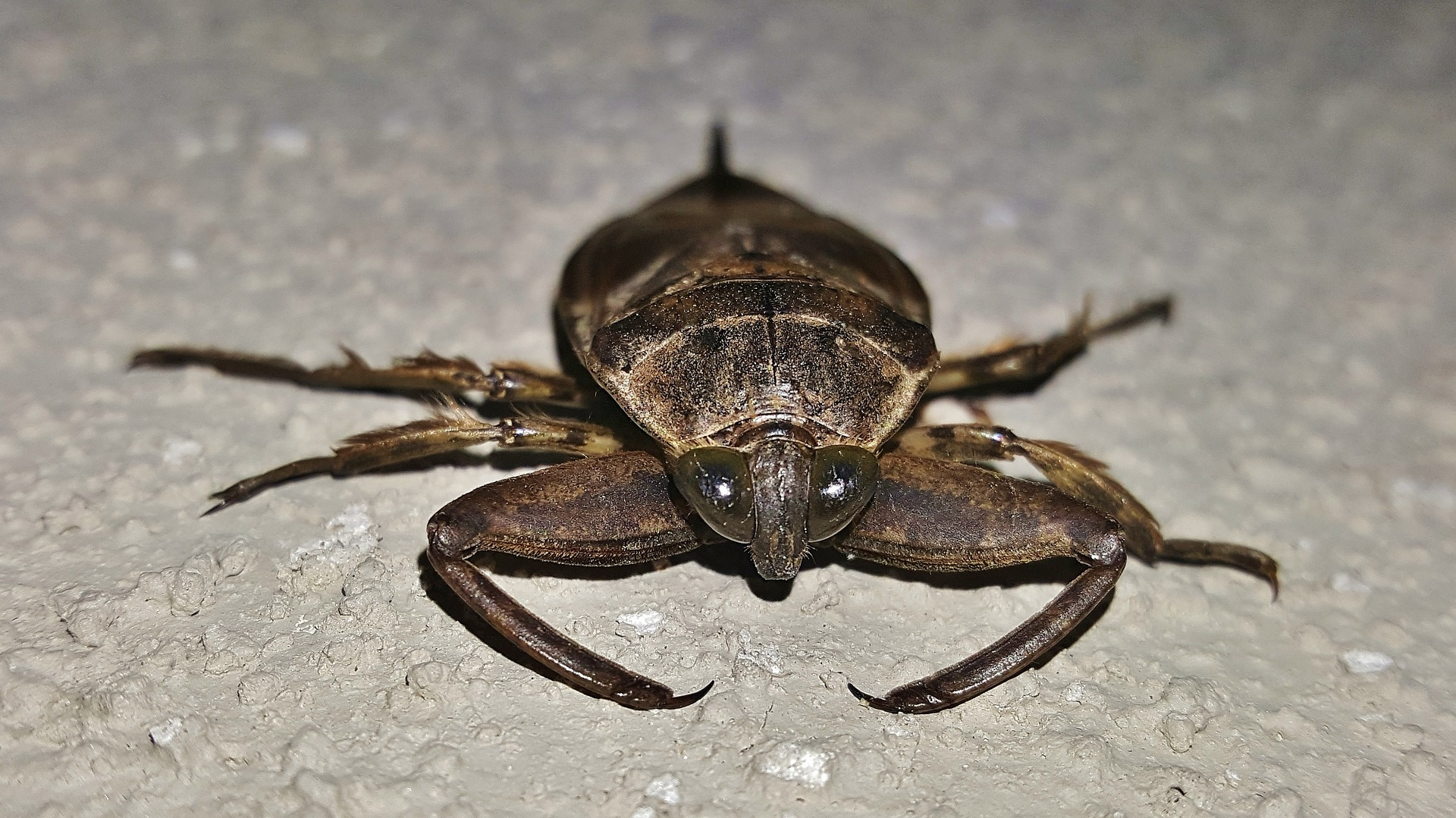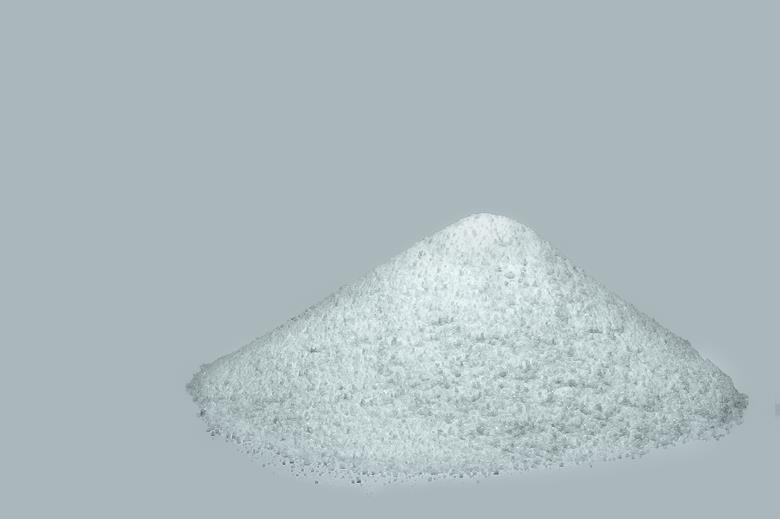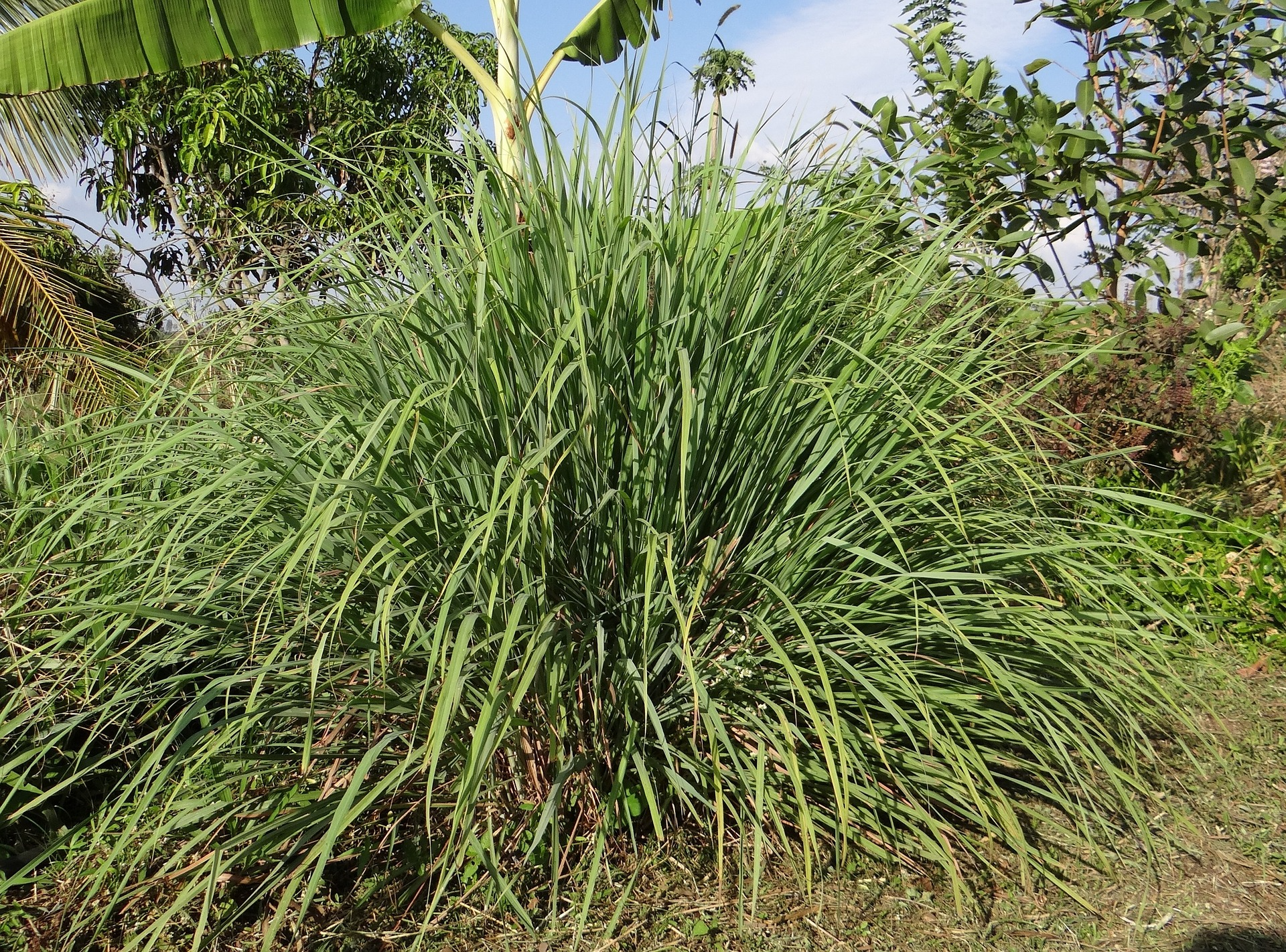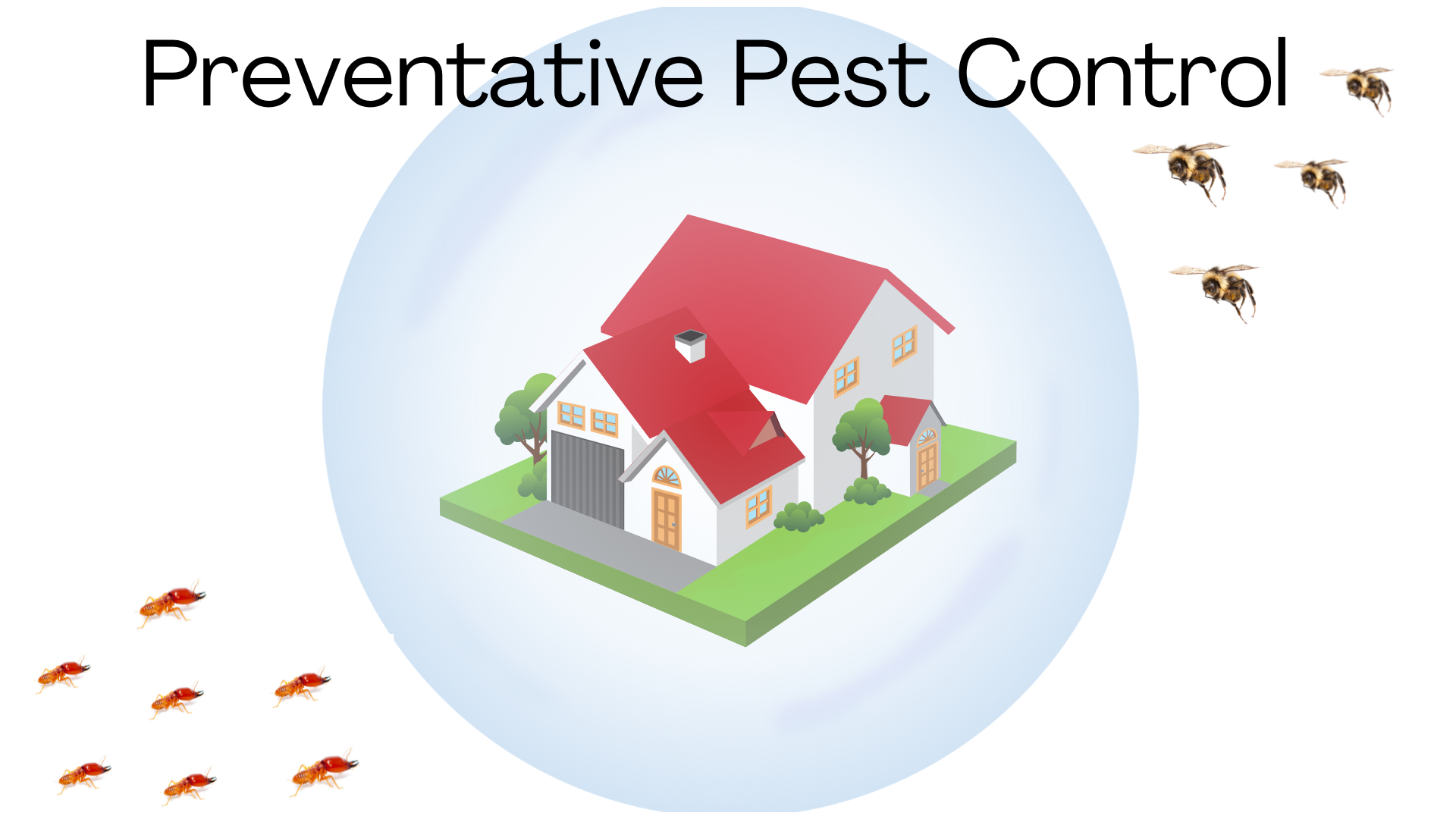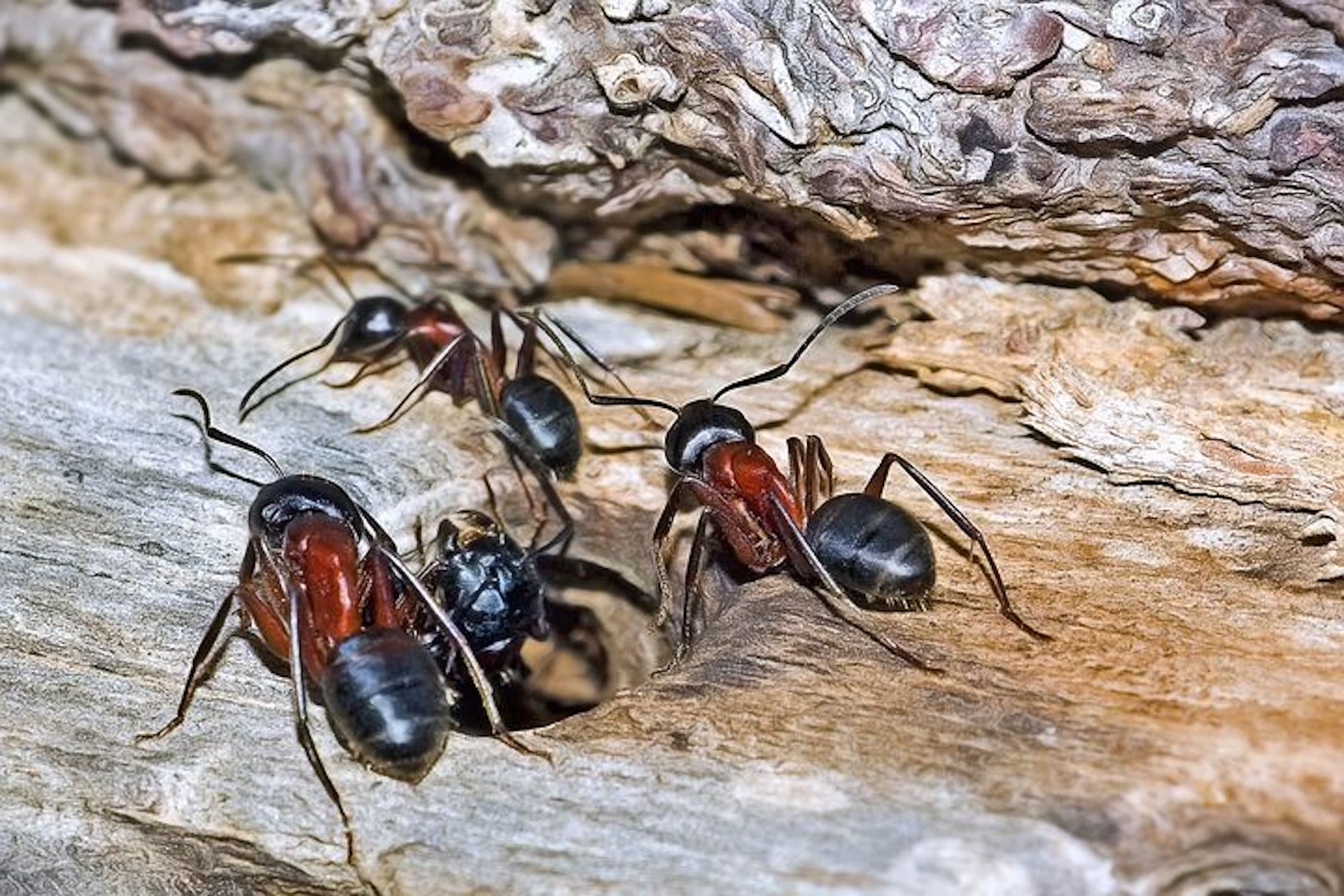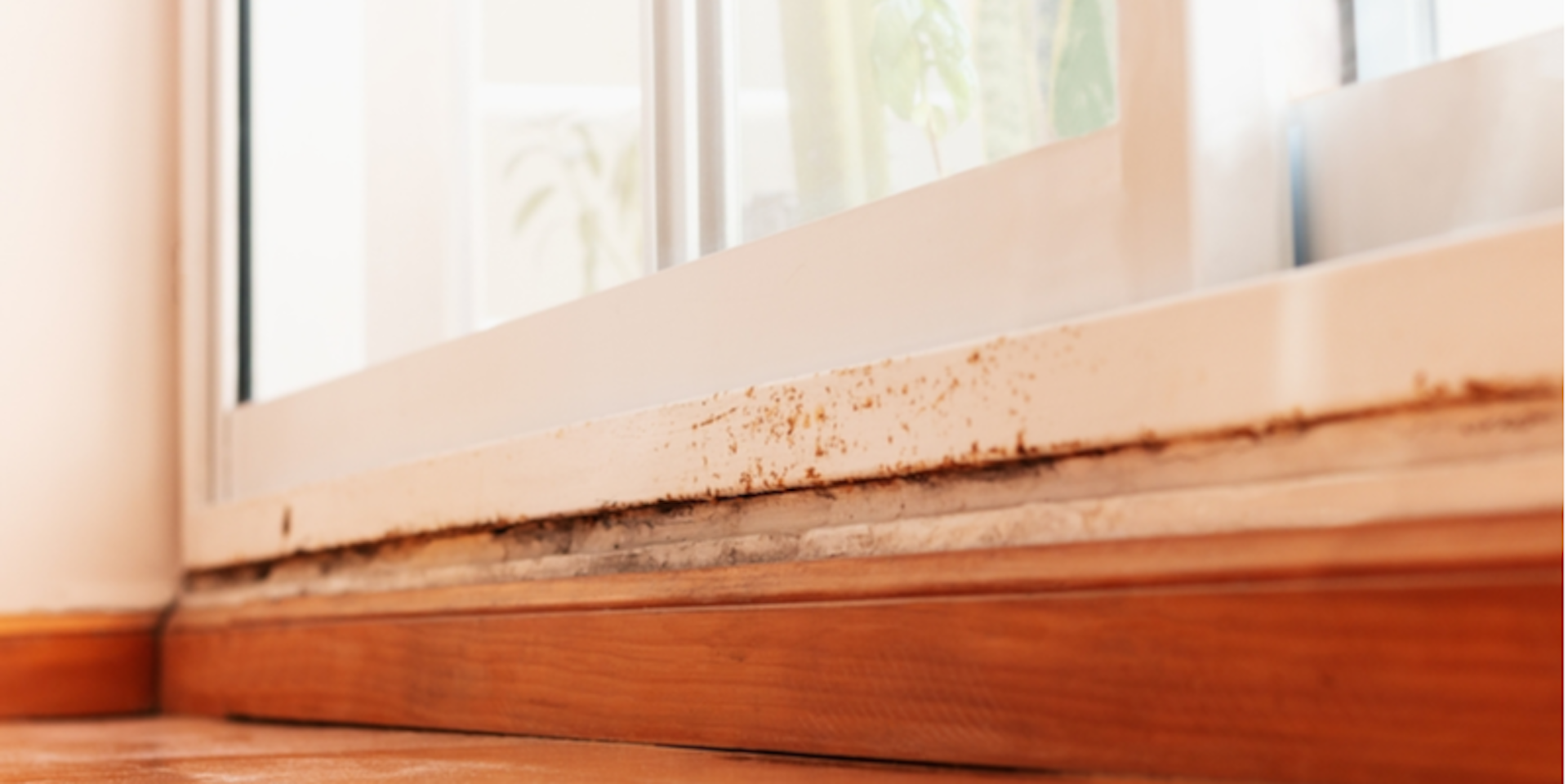The Ultimate Guide to Getting Rid of Stink Bugs
Stink bugs, known for the foul smell released when they are squished, are common household pests found in many homes across the country. While stink bugs may look intimidating, they are relatively harmless to humans and typically don’t cause any property damage.
However, stink bugs tend to invade homes in large numbers and release an unpleasant odor when killed, making them a nuisance for many homeowners. Learn about how to properly identify stink bugs, as well as how to get rid of them and prevent them from re-entering your home.
How to Identify Stink Bugs
Stink bugs have a distinct appearance, as they have torsos shaped like a shield and a speckled brown coloring. In addition, they have smooth, rounded shoulders and alternating dark and light bands on their abdomen and antennae.
Stink bugs are commonly observed standing still and can easily appear dead but are actually in a low-energy state called diapause, which occurs when they cannot find a food source.
Why Stink Bugs End Up in Your Home
The most common reason stink bugs enter homes is to seek shelter during the colder months. Once they have entered your home, stink bugs give off pheromones that attract more stink bugs, which is why you may see more than one stink bug at a time. Stink bugs can enter your home through cracks and crevices, such as damaged screens or windows.
When Are Stink Bugs Most Active
Stink bugs are most active from March through September, though this can vary depending on the weather during a particular season. Some studies have shown that stink bugs can survive during the winter.
Stink bugs are typically more active during the day but can also be attracted to light in the evening, such as a lamp or night light.
Are Brown Marmorated Stink Bugs Dangerous?
Brown marmorated stink bugs are not aggressive, do not bite people or pets, and are not known to transmit disease. However, some people may have an allergic reaction to the allergens given off by stink bugs, but this is rare.
How to Get Rid of Stink Bugs
Nevertheless, stink bugs can be a major pest. So, if you find yourself dealing with an infestation, there are a few keen steps you can take.
Vacuum Them
Vacuuming stink bugs is a quick and easy way to get rid of them. After you’re finished, empty your vacuum into a garbage bag and dispose of it outside of the home to prevent stink bugs from returning inside.
Use Soapy Water
Stink bugs can also be killed using soapy water, as they will drown in the solution. To try this method, simply fill a bucket up with water and soap before sweeping the stink bugs into the bucket. You can also use a splash of vinegar for extra strength.
Neem Oil
Neem oil is a naturally-occurring pesticide that can be used to kill stink bugs by interfering with their instinctual behaviors. When ingested by stink bugs, it can trick them into feeling like they are no longer hungry and can even cause infertility in the insects.
Essential Oils
There are several essential oils that are known to repel stink bugs and can be used as a more natural form of pest control. Try spraying lemongrass, clove oil, spearmint oil, and ylang-ylang around your home to ward off stink bugs.
Insecticides
While using insecticides may work in the short term, it is not a long-term solution for getting rid of stink bugs. Like termiticides, insecticides for stink bugs have to be properly applied. Therefore, when dealing with stink bugs, you should contact a pest control professional rather than taking matters into your own hands.
Call a Pest Control Expert
Stink bugs can be difficult to exterminate on your own, so it is advised that you contact a trusted stink bug control expert to conduct a stink bug inspection and treat the infestation appropriately.
Of course, homeowners do have the power to treat stink bugs, namely through prevention.
How to Keep Stink Bugs Out of Your Home
Seal Entries
Sealing up any possible entryways is essential to prevent stink bugs from entering your home. You can use caulk to seal any cracks and crevices where stink bugs could potentially squeeze through to keep these pests out of your home.
Check for Broken Screens
Stink bugs often enter residences through broken screens, so be sure to regularly check for any screens that may need to be repaired in your home.
Adjust Your Exterior Lighting
Stink bugs are attracted to light, so turning off your exterior lighting at night could prevent them from hanging around your home. It may also be helpful to use yellow bulbs for your outdoor lighting, as stink bugs are less attracted to this kind of light.
If you have been seeing stink bugs in your home, don’t ignore the problem. Contact a pest control expert to inspect your house and take the necessary steps to treat the problem. Pest control experts like Anchor Pest Control offer a pest control maintenance plan designed to repel insects like stink bugs from your home before they even enter.
FAQs
Do stink bugs bite?
Stink bugs are not aggressive and do not bite, as their mouths do not enable them to pierce through human skin.
Do dryer sheets keep stink bugs away?
The scent of dryer sheets has been known to keep stink bugs away, so try rubbing dryer sheets on your screens or any possible entryways to keep these pests out of your home.
How long do stink bugs stick around?
Stink bugs typically have a lifespan of about six to eight months and are primarily active from March to September.
How to Tell If You Have Bed Bugs | 6 Signs to Watch
Dealing with a bed bug infestation is a nightmare most homeowners hope never to encounter.
Unfortunately, bed bugs are incredibly difficult to treat and can only be prevented with a pest control maintenance plan.
While bed bugs tend to sneak into your house in ways you would never expect, it’s nearly impossible to ignore the signs of an infestation. From bites on your body to blood stains on your sheets, bed bugs make their presence known in big and annoying ways.
To learn more about bed bugs and to stop an infestation in its tracks, it’s important to know the signs of a bed bug presence.
What Causes Bed Bugs
Contrary to popular belief, having bed bugs is not a sign of a dirty home or poor personal hygiene.
Bed bugs most commonly enter homes by clinging to used furniture and other secondhand items. They can often be picked up while traveling if your hotel or Airbnb has a bed bug problem.
Therefore, it’s imperative to always inspect luggage and clothing when traveling or thrifting from somewhere that could have bed bugs. Unfortunately, the only way to truly stop bed bugs is through preventative pest control and knowing what places you are most vulnerable to catch bed bugs.
How to Look for Bed Bugs
Below are some helpful tips on how to look for bed bugs if you suspect an infestation in your home.
Learn How to Identify Bed Bugs
Bed bugs are small, typically the size of an apple seed. They are reddish brown in color, though immature bed bugs are more translucent and smaller than adults. Bed bugs are also wingless, meaning they cannot fly and instead crawl around on mattresses, box springs, upholstered furniture, and even clothing and other garments.
Look Where They Hide
Bed bugs typically hide in mattresses and box springs, as well as in the seams of chairs and couches, in the folds of curtains, and under loose wallpaper and wall hangings. In addition, they can even make their way into outlets and other areas of the home that are unprotected.
Because there are so many potential places for bed bugs to hide, it is important that you get rid of any unnecessary clutter and regularly tidy up around the house.
Learn the Signs
Knowing the signs of a bed bug infestation is imperative when it comes to preventing them or treating an existing problem. Whether or not you have reason to believe you may have bed bugs, it is a good idea to keep a clean home and thoroughly inspect any secondhand items before bringing them into your house, as well as any luggage after a trip.
6 Signs You Have Bed Bugs
1. Blood Stains on the Mattress
Reddish blood stains on your mattress or sheets are a big indicator that you may have a bed bug infestation, as this could be from bed bugs getting crushed by the weight of you or your pets sitting on the bed. These blood stains may also appear on your couch or armchairs, so keep an eye out for any spots that fit this description.
2. Bed Bug Bites
If you notice bug bites on your body, it could be a sign that you have bed bugs. Bed bug bites are small, swollen red spots that often appear in a zigzag pattern on the skin and typically cause itching.
3. Bed Bug Eggs
Bed bug eggs are small, pearly-white, or translucent eggs that resemble a small grain of rice. Though they may be difficult to spot at first, they are visible to the naked eye and should be dealt with immediately upon discovery.
4. Live Bugs
Spotting live bed bugs is an indisputable sign that you have a bed bug infestation in your home. If you see any live bed bugs, even just one, promptly contact a pest control expert to evaluate and treat the problem.
5. Musty Odors
If you’re dealing with a larger bed bug infestation, you may notice a musty or sweet odor. This odor will often become stronger the larger the infestation is, so be sure to check for any signs of bed bugs if you or your loved ones notice any unusual smells in your home.
6. Bed Bug Excrement
Bed bug excrement is also a strong indicator that there are bed bugs in your home. This excrement can easily be seen on the surface of mattresses or other pieces of furniture and typically looks like tiny black spots.
While many DIY methods may be tempting, it’s best to call a professional. Be sure to reach out to your local exterminator for bed bug treatment in New Jersey to get rid of bugs fast and prevent them from spreading to other parts of your home.
FAQs
Can you see bed bugs with your eyes?
While bed bugs are very small, they can be seen with the naked eye. Keep an eye out for small, reddish-brown bugs with flat, oval-shaped bodies.
What should you do if you slept in a bed with bed bugs?
If you discover that you unknowingly slept in a bed with bed bugs, inspect your body for any signs of bites. If you do discover bed bug bites, wash the area with soap and water, and apply a corticosteroid cream if you experience any itchiness. You should also wash any clothing that may have been exposed to bed bugs and contact a pest control expert promptly.
Will bed bugs survive the wash cycle?
Exposing bed bugs to high temperatures is the best way to kill them, so wash any bedding and clothing that have been exposed at a high temperature for 90 minutes or more. However, it is not always guaranteed that all bed bugs will be killed during a wash cycle, so seek the help of a pest control company to have your home properly treated.
Pest Control Prices | How Much Is Pest Control
Between all of the maintenance costs of owning a home, the last thing you want to pay for is pest control.
It’s understandable. Pests are already such a nuisance, and the last thing you want to add on top is a massive pest control bill.
But, oftentimes, the cost of pest control is more affordable than many people think it is. And preventative pest care can cost even less and give you greater peace of mind.
To help you navigate the world of pest control, let’s discuss how much you can expect to pay for your average pest control service.
Average Pest Control Prices
Pest control prices generally differ by the level of service you require and the type of pest that needs to be controlled.
For homeowners, three types of pest control services are generally available:
- Preventative: A monthly-pest maintenance plan designed to prevent pests from entering your property.
- On-going: Exterminator services designed to eliminate pests on your property throughout one or multiple visits.
- Emergency: Extreme services required to eliminate a full-blown infestation, such as fumigation.
Emergency services will yield the highest pest control costs, while preventative maintenance will yield the cheapest.
For example, my company’s Pest Protect 365 plan will cost the average homeowner or business around $50 or more a month, depending on several circumstances.
However, ongoing treatments for pest control could cost upwards of $100 or more per visit, compounding the amount with each visit.
Finally, emergency termite treatments for subterranean termites that have invaded a home could be upwards of $1000, depending on the size of the home.
| Treatment | Estimated Cost |
| Ongoing Treatment | $100-$300 per appointment |
| Monthly Maintenance | $40-$70 per month |
| Emergency Service | Upwards of $1000 |
Pest Control Prices By Pest Type
As previously mentioned, pest control costs tend to differ by pests, which require different treatments for elimination.
To help you determine what to expect from each pest, we’ve created a table of the average cost per pest below.
| Pest Type | Estimated Pest Control Cost |
| Ants | $100-$500 |
| Bed Bugs | $300-$5000 |
| Cockroaches | $100-$400 |
| Rodents | $150-$500 |
| Spiders | $100-$200 |
| Stink Bugs | $100-$300 |
| Termites | $200-$8000 (depending on treatment) |
Source: https://www.angi.com/articles/how-much-does-pest-control-service-cost.htm
These estimates are based on nationwide data. They include various factors that impact their pricing, which you should be aware of.
What Factors Influence Pest Control Prices?
- Pest Types: Pests, like bed bugs and termites, that warrant more aggressive treatments will cost more to treat than ordinary pests, like mosquitos, moths, spiders, and bees.
- Treatment Type: Pest control prices vary widely by treatment type, with some exterminator services, such as fumigation, costing thousands of dollars. On the other hand, wildlife pest removal may cost as little as $100.
- Level of Infestation: The severity of the infestation will influence what treatment types need to be taken, as well as how many visits may be required by your exterminator.
- Commercial vs. Residential: Commercial pest control will be more expensive than residential because commercial properties are typically larger and require more hands-on work.
- Property Size: Larger properties may require more labor for inspections and treatments, driving up the cost of your service.
- Exterminator: Pest control prices vary widely between exterminators, so find one that is comfortable for your price range.
How Does Monthly Pest Maintenance Compare to Emergency Services?
To compare the price of preventative pest control with emergency services, you need to calculate how much annual pest control costs for generalized prevention. According to Architectural Digest, the average person can expect to pay as much as $400 to $950 for annual pest control.
While more expensive than some of the services listed above, you need to factor in that preventive maintenance accounts for every type of pest and is significantly cheaper than emergency services for bed bugs or termites.
Furthermore, businesses and homeowners can benefit more from the peace of mind that preventative maintenance provides, ensuring your home/business is entirely pest free.
When Is the Right Time to Call an Exterminator?
While some people may be tempted to save money using DIY pest control, most professionals generally recommend against it.
For example, spotting certain pests like cockroaches, bed bugs, and termites will automatically imply an infestation and require quick treatment.
Furthermore, these bugs are very difficult to contain on their own and often require pesticides to eliminate them for good.
On the other hand, pests like rats may be easier to deal with during the cold winter months if there are not too many already in your house.
For this reason, if you spot bed bugs, cockroaches, termites, multiple rodents, and a huge infestation of any other pest, you will save more money and get rid of them faster with the help of an exterminator.
FAQs: Pest Control Cost
Is it cheaper to do pest control on your own?
DIY pest control may be cheaper short-term, but it all depends on its efficacy. If you cannot successfully treat a pest infestation on your own, then you will pay significantly more than if you hired a professional in the first place.
How often should pest control be done?
Most exterminators recommend monthly service, though quarterly is also acceptable. The more your home is inspected and treated, the safer it will be from pests.
Is pest control worth it?
Professional pest control is very affordable, safe, and effective, making it the right choice in the case of an emergency or any type of infestation.
DIY Pest Control vs. Professional: What's Best for You?
The DIY ethos has permeated every industry and bit of culture imaginable. From DIY home projects to DIY artisans and artists, it’s easy to think that many projects can be completed with a quick YouTube video and some elbow grease.
Nevertheless, there are special circumstances where professional assistance should be recommended.
In the pest control industry, there are countless instances where people have failed to control an infestation using DIY methods and call for emergency services.
When one factors in the types of chemicals used for pest control and the health risks many pests carry, it’s almost always safer and easier to call your local exterminator.
With that said, there are some instances where DIY pest control can be effective and more affordable.
So let’s discuss how and when to decide between DIY and professional pest control services.
DIY vs. Professional Considerations
When dealing with an immediate threat posed by a pest, deciding between DIY pest control methods and contacting your exterminator will depend on a few factors.
Pest Type
Identifying what pests you are dealing with will allow you to assess your available options and diagnose any immediate health or safety threats.
For instance, many pests can be handled using fairly standard DIY methods, such as:
- Ants
- Mosquitos
- Rodents (in most cases)
- Fleas
- Spiders (depending on species)
- Silverfish
- Stink bugs
- Beetles
Of course, the level of infestation will also influence whether or not greater control methods are required.
However, many pests are very difficult and dangerous to control using standard DIY methods, including:
- Cockroaches
- Bed bugs
- Scorpions
- Wasps
- Termites
- Snakes (depending on species/severity)
Certain pests, like cockroaches and bed bugs, are almost entirely impossible to eliminate DIY, while others, like termites, require special attention because they can damage your house.
After identifying the type of pest, you’ll need to run an inspection to see how many you have.
Level of Infestation
One reason I recommend professional assistance is that most people don’t know where to look or how to inspect for various pests.
Inspections may not be required in some instances, such as for ants, but most pests should require them.
So without an inspection by a professional, it’s hard to determine your level of infestation.
However, if you are dealing with several rats, spiders, ticks, or silverfish, then it may warrant hiring a pest control expert.
Furthermore, many pests, like termites and cockroaches, are social. If you find one in your home, chances are there are more lurking, and you’re already infested.
Available Pest Control Methods
It’s also important to factor in what kind of pest control methods should be used for an infestation.
There are generally a few different kinds of pest control methods available, which include:
- Prevention: Prevention is best used before an infestation, but it could include erecting physical barriers and cleaning up clutter.
- Chemical pesticides: Pesticides are highly effective but best used by a professional.
- All-natural methods: Products like neem oil and essential oils are effective against some pests and are popular among DIY crowds.
- Traps: Rat traps, bug zappers, and anything that kills on contact can be effective against pests.
- Biological: Using spiders, birds, or cats as natural predators can help curb pests.
Some pest control methods are very effective for DIYers but are best used for certain pests and before infestations grow.
For example, bug zappers and dichotomous earth may be good against silverfish and mosquitos, but an infestation of termites will require chemical termiticides.
At that point, applying these methods comes down to the safety and security of these products and their use.
Safety
While pesticides are generally safe, professionals or experts should handle most pesticides. Misapplication could put you and your pets at risk–not to mention it won’t be as effective.
On the other side, the immediacy of the threat to you and your health will also factor into whether or not it is safer to DIY a project or contact an exterminator for emergency services.
Cost
Now for the most important consideration, the cost. Most DIY methods will be more affordable short-term than initial treatment from an exterminator.
For example, Angi’s List estimates the average cost of professional cockroach treatment between $100-$600. Of course, you can find a household pesticide designed for cockroaches from anywhere between $25-$50.
However, you’ll need to factor in efficacy regarding one or the other option. DIY sprays may mask the problem but often don’t address the root.
Over time, you may end up calling your exterminator anyway and incur damage the longer you let an infestation run in your home. Generally, the longer you wait to call your exterminator, the more you should expect to pay, largely tipping the cost in favor of professional services.
Convenience
Finally, you need to factor convenience and time into this decision. I don’t just mean the time taken to assemble your products and apply them but also the time it will take for your home to feel normal and secure again.
As much as pests physically threaten your health, they can be mentally taxing. Take that into consideration when deciding between proffesional or DIY services.
DIY Pest Control Perks and Obstacles
DIY pest control does provide some advantages, although there are several caveats to be aware of.
Benefits
- Often effective enough at combatting certain pests
- More affordable than professional services
- Option to use natural products
Obstacles and Hazards
- Not guaranteed to work
- Requires special handling of chemicals
- May not address root problems
- Could be more costly over time if ineffective
- Increases your risk of bites and exposure to pests
Additional Benefits of Hiring a Professional Exterminator
Aside from the higher upfront cost, there is very little downside to hiring a professional exterminator.
Not only are they guaranteed to be delivered effective service, but many exterminators offer additional services, such as inspections and monthly pest control maintenance plans.
Overall, the benefits of professional pest control for bugs like termites, roaches, rodents, wasps, and bed bugs far outweigh many DIY methods.
The Importance of Prevention
Finally, when discussing pest control, we can’t fail to mention prevention.
Ultimately, you can skip the decision between professional or DIY pest control by implementing a few preventative pest control methods, such as sealing barriers and cleaning up any clutter.
Furthermore, your local exterminator will offer you some helpful preventative advice after treatment or an inspection to ensure your home remains pest free.
It’s clear that the benefits of hiring a professional pest control expert outweigh many DIY methods, especially when they come to tough bugs like roaches and termites. Even if you are still committed to trying DIY treatment options out, I highly recommend hiring an exterminator for an inspection and just some friendly advice.
How to Get Rid of Waterbugs: Boric Acid, Baking Soda & More!
Distinguishing between water bugs and cockroaches in New Jersey is quite difficult. Both have long, flat brown bodies and look almost identical.
While often referred to as a roach, waterbugs are aquatic creatures that are part of a completely different genus.
Nevertheless, spotting a water bug or cockroach in your home can be quite jarring and indicate the possibility of an infestation. If you want to eliminate water bugs and cockroaches for good, read this guide.
What are Water Bugs?
Waterbugs are large, ovoid-shaped bugs that tend to swell in standing water. The true water bug is actually called a Nepomorpha and is part of the “true bug” order known as Hemiptera.
They are usually brown or black in color with long antennae and six legs and are often confused with the Oriental cockroach. However, the Oriental cockroach is native to Africa.
Like pincher bugs, waterbugs are rarely found in homes, but they are quite common across the northeast region, particularly in the tri-state area. Mostly, they feed on other insects, though they’ve been known to bite humans and infest houses from time to time.
For this reason, being able to identify and treat water bugs when they enter your home is crucial.
Identifying Water Bugs
Waterbugs have a flat body shape with two long antennae on their heads. They also have wings but cannot fly due to their size and weight.
Their bodies range from 1/2 inch to 2 inches in length depending on species, making them easy to identify when compared to other bugs like ants or flies.
Water Bugs thrive in dark, damp areas such as basements, crawl spaces, sewers, and drains, where they consume decaying organic material like food remnants or dead animals. Outside, near wet areas like ponds or streams, they can exist happily and remain hydrated in times of drought.
The average lifespan for a waterbug ranges from 6 months to 2 years, depending on its environment and access to resources.
Unfortunately, waterbugs are a common pest found in many homes and businesses, but there are various ways to get rid of them.
How to Get Rid of Waterbugs
Eliminating water bugs can be a challenging endeavor, but there are multiple techniques that can help. In many ways, water bug elimination is the same as getting rid of cockroaches, though there are some materials that work better on waterbugs.
Boric Acid
Boric acid is an effective solution for getting rid of waterbugs, as it dehydrates and kills them on contact. This substance works by dehydrating and killing the insects on contact.
To use boric acid, simply sprinkle it around areas where you have seen waterbugs or in places where they may enter your home, such as windowsills and doorways.
Baking Soda
Baking soda is another option for killing water bugs. It works similarly to boric acid by drying out their exoskeletons when applied directly to the bug or sprinkled in areas where they may congregate.
Diatomaceous Earth
Diatomaceous earth is also an effective way to kill these pests. This powdery substance consists of fossilized algae which cuts through the insect’s exoskeleton when rubbed onto them, causing dehydration and death over time.
Chemical Sprays
Insecticides and sprays are available at many hardware stores; though, these items must be used with caution since they include toxic chemicals that can prove dangerous if not handled with care.
Biological Methods
Introducing some natural predators, like spiders, lizards, frogs, birds, and centipedes, can help regulate water bug populations without using chemical treatments.
Nevertheless, when it comes to pest control, preventative pest control is always the most effective and natural method available.
Natural Ways to Prevent Water Bugs?
It is essential to take action to avert water bugs from invading your residence or business, as they are a prevalent issue for both. Here is a list of ways to prevent water bugs naturally:
- Eliminate standing water around your property.
- Seal up any entry points into your home or business, especially around pipes where water flows.
- Eliminate any food or debris lying around your home.
- Use bait stations and traps to catch any waterbugs in your home.
- Conduct a routine inspection using a pest control service.
Professional Pest Control Services for Waterbugs
Professional exterminators have the experience and knowledge necessary to identify, treat, and prevent future water bug infestations.
Start with an inspection to see if you have any water bugs on your property. Afterward, your exterminator will use a variety of methods to reduce and eliminate the waterbug population in your home for good.
For total, year-round protection, be sure to ask about any residential protection plans.
Anchor Pest Control offers full 365-day protection against over 40 species of pests, including waterbugs, with its Pest Protect 365 plan. Be sure to ask us for a quote the next time you schedule an inspection or service–it might just save you some money.
FAQs: How to Get Rid of Waterbugs
What is the most effective way to get rid of waterbugs?
For successful water bug elimination, an IPM approach should be employed to identify the source of infestation, reduce entry points for pests and use chemical treatments when needed. Identifying the root of the infestation, blocking entry points for pests, and using chemical treatments like insecticides when necessary are all components of an integrated pest management (IPM) strategy, which is a successful way to get rid of waterbugs.
Additionally, it’s important to use proper sanitation techniques and regularly inspect for signs of new infestations. Taking all these steps together will help ensure that you can quickly and effectively eliminate your water bug problem.
How do you get rid of water bugs naturally?
Water bugs can be naturally removed from your home or business by using a combination of preventive measures and natural solutions. Prevention includes sealing off cracks, crevices, and other entry points to keep water bugs out. Natural solutions include vacuuming up any visible pests with a vacuum cleaner equipped with a HEPA filter; applying diatomaceous earth around the perimeter of the building; setting traps such as sticky boards or glue traps in areas where they are likely to congregate; placing mint plants near window sills, doorways, and other openings to deter them; and cleaning regularly with vinegar-based products that contain essential oils like peppermint oil or tea tree oil.
What brings water bugs out?
Water bugs are usually attracted to areas with standing water, such as clogged gutters and drains. Moist soil is a draw for these bugs, so they can be seen in places with plentiful humidity like gardens or other outdoor spots.
Additionally, warm temperatures can draw them out; this is why you often see more water bugs during the summer months. Lastly, food sources such as decaying organic matter can attract these pests.
11 Myths about Pest Control That Are Wrong
While pest control may not always be top-of-mind during your day-to-day, it’s important to be prepared and know what to do if an infestation ever arrives at your door.
That’s why we always recommend our customers look into a pest control maintenance plan so that they are always prepared.
Nevertheless, some people choose to remain on the DIY route or contact an exterminator only in emergencies.
That’s why I want to dispel a few common myths that many of our customers have come to believe surrounding pest control, which leads them to make costly and dangerous decisions.
1. If I don’t see pests, they’re not there.
A massive part of pest control is prevention.
Unfortunately, many homeowners don’t often think about prevention or implement any measures until it is too late.
However, it’s very common to find bugs that homeowners didn’t even know existed during a routine inspection. For example, insects like bed bugs, cockroaches, and rodents, are nocturnal and dwell in areas that aren’t commonly trafficked, like basements and attics, meaning you’ll rarely have a chance to spot them in the open.
Furthermore, animals like rodents are sometimes less noisy than you think and could live in walls and basements without your knowledge.
That’s why I recommend every homeowner do a thorough cleaning and inspection of their home every season, checking for signs of pests, such as:
- Droppings
- Shells
- Larva
- Bite marks on walls
- Holes in wood
- Wood shavings
- The presence of spiders and other insects
- The presence of birds
In addition, you should implement some pretty standard prevention strategies, such as sealing off any openings to the outside and disposing of any trash that may attract insects.
Even if pests are not there now, this doesn’t mean you’re immune from them coming to your home in the future.
2. One pest doesn’t equal an infestation.
Similarly, many pests are social creatures and travel in packs or colonies. Some common examples of social pests include cockroaches, bees, wasps, termites, ants, and bed bug infestations.
So if you spot any of these pests, it could indicate that you have a deeper problem that you physically cannot see but is present.
In this instance, I highly recommend you contact an exterminator for a thorough home inspection and to thwart an infestation before it grows.
3. DIY pest control is cheaper.
Ignoring a pest problem or dealing with it yourself could cost you more than it could save you money.
First, not addressing the issue right away will require more extreme measures as infestations rise out of control. For instance, cockroach removal may eventually require fumigation of the entire home–though rare–which would cost more than any standard treatment.
Secondly, many people don’t know how to correctly apply pest control products, like pesticides, which could harm their health if used inappropriately.
Furthermore, most homeowners will be unable to determine if they’ve properly dealt with an infestation without a proper inspection.
In the end, mishandling an infestation will cost you more than the initial treatment from your local exterminator and probably require more extensive services.
4. Homeowners' insurance will cover the damage.
Another risk of not addressing an infestation is the damage that certain pests, like termites and ants, can do to your home.
Unfortunately, virtually no homeowners insurance policy will cover damage from pests, and you will be left to foot a major bill.
5. I can handle most pests on my own.
Ultimately, this leads me to the most dangerous myth of all, which is that most pests can be treated DIY.
Pest control requires advanced knowledge of chemicals and dangerous products that the average layman should not handle. In addition, many pest control methods will vary by pest, as some may require intense fumigation and even evacuation of the home.
Many pests like fleas, mosquitos, rodents, and sandflies can also carry diseases that are harmful to human health, putting your family at risk if they are not dealt with accordingly.
When pest control extends beyond the point of prevention, calling your local exterminator is no longer optional.
6. Termites don’t damage brick/slab homes.
But what about if you live in a brick or slab home? What damage could termites and pests cause?
Unfortunately, termites can easily make their way through the cracks inside a brick home and attack vulnerable parts, such as the wood frame.
Furthermore, anything made of wood will not be safe from the wrath of these pesky pests, so it’s always safer to contact your local exterminator immediately.
7. A clean house is enough to prevent pests.
Another important myth related to our first query is the notion that your home is immune to pests just because it is clean.
While we certainly recommend cleaning your home of any garbage, clutter, or standing water, there are still sources of food and water that will attract rodents and cockroaches regardless.
Additionally, other pests, such as bed bugs, could enter your home accidentally after traveling, despite having a clean and bleached home.
Other factors, such as having tall grass or a yard filled with clutter, can attract bugs to your property that eventually make their way inside.
8. Cats are natural rodent deterrents.
While there is some truth to the idea that cats are natural predators of mice, they are not as effective as you think.
Primarily, it is the scent of cat urine which repels most mice from a home.
Nevertheless, not all mice will be intimidated by cats, and relying exclusively on your feline friend is generally a poor strategy to rid your home of any existing mice.
In general, cats are about as effective at stopping mice as dogs are at getting rid of squirrels on your property.
9. Rodenticides are more effective than traps.
Similarly, rodenticides are somewhat effective at treating mice, but most rodenticides take up to a full week to work. In the meantime, mouse traps are far more effective at killing mice instantly and helping to control an infestation before more mice mate and reproduce.
10. Mice are mostly attracted to cheese.
Contrary to popular belief, mice are more often than not attracted to sweeter foods, such as grains and vegetables, than cheese. One study from years ago found that food like cereal is more effective at luring mice to a trap than cheese.
Generally, mice will eat anything if they are hungry enough, so cleaning up garbage and lining traps with sweeter and more natural foods like cereals and grains will be more effective as a rat repellent.
11. Bug zappers are effective mosquito repellents.
Finally, not only has one study found that only 0.13% of insects killed by zappers are biting insects but that most insects killed by zappers benefit the environment.
As a result, you’re better off using many natural and DIY methods to repel mosquitos from your yard, including:
- Eliminating standing water
- Using neem oil
- Spraying eucalyptus and other essential oils around the yard
- Lighting a citronella candle
- Planting fennel and thyme in your garden
In fact, mosquitos are among the few insects where natural DIY methods, such as essential oils, are particularly effective at preventing infestations.
Hopefully, by dispelling these myths about pest control, you can take the right steps to rid your home of pests using the appropriate methods.
While DIY is a very popular alternative in many industries, pest control remains one industry where it is always safer to leave it to the professionals.
How to Get Rid of Gnats in New Jersey
Living in New Jersey, you’ve likely dealt with a fair share of insects, whether it’s spiders or bed bugs.
One common pest you’ve probably dealt with on those muggy summer afternoons is the pesky and relentless gnat. These small, two-winged flies are known for irritating behaviors, a high probability of spreading disease, and rapid reproduction habits.
There are several ways to eradicate these unwelcome pests from your home if you're in the midst of a gnat infestation. Still, before that time comes, it’s important to have a general knowledge of the insects.
Gnat Overview: What Are They?
The word “gnat” tends to encompass a wide variety of small flying insects in the suborder Nematocera, generally in the families Mycetophilidae, Anisopodidae, and Sciaridae. Several common species are often labeled “gnats,” including:
- Black flies
- Midges
- Fruit flies
- Fungus gnats
- Drain flies
- Biting midges
In any case, gnats are a common annoyance for homeowners in New Jersey, begging the question: how do you get rid of them?
Common Ways to Get Rid of Gnats
There are several ways to get rid of gnats in and around your home, both DIY and professionally. To begin, we’ll look at ways to eradicate gnats outdoors.
Outdoor Gnat Control
Outdoor gnats can be a huge inconvenience during a barbeque or a relaxing sunny evening, especially if you live near a stream or other body of water. This is because gnats use stagnant water as a breeding ground, laying their eggs, which soon hatch into nymphs.
As these insects tend to fly in clouds, or “swarms,” it’s not uncommon to become overwhelmed by these small, pesky flies. From flying into your face, eyes, and nose to dropping into your drinks, gnats are a major pest for those looking to enjoy their outdoor spaces.
However, there are several ways to avoid gnats and make your outdoor living spaces more enjoyable.
Avoid the Sweets
Gnats are often attracted to sweet scents, including fruits, strong perfumes/colognes, and scented soaps/moisturizers. To combat gnats outdoors, try keeping the sugary drinks and foods inside and switch to unscented beauty and hygiene products.
Gnat-Repelling Plants
Several herbs and flowers produce an aromatic scent that, while pleasant to humans, is absolutely appalling to gnats. Lemongrass, lavender, and marigolds are some such plants; try planting them near your outdoor living space to naturally repel insects while adding some color and greenery!
Bug Zappers
Bug zappers are a useful tool on every patio, attracting and killing all sorts of flying insects, including gnats. Zappers tend to use ultraviolet light as bait, attracting gnats to the zapper’s electrically charged mesh. Then, when the insect flies too close, the electric current handles the rest, significantly reducing the number of pests in the immediate area.
Indoor Gnat Control
If you think swatting at gnats outside is bad, imagine them taking over your kitchen or bathroom! Unfortunately, gnats, especially fruit flies, drain flies, and fungus gnats, are common in New Jersey homes.
These insects are primarily attracted to rotten fruit and compost, often found in drains, trash receptacles, and even on your counter in the fruit basket. Unfortunately, with a plentiful source of food and water, these insects will rapidly multiply, leaving your house infested! Fortunately, there are several DIY tips to take care of indoor gnat infestations.
- Fly Paper
This practice is relatively simple, inexpensive, and easy.
Purchase a roll of fly paper at any hardware store; this paper is coated in a strong, fragrant adhesive that attracts all sorts of household pests, including flies and gnats.
Place the paper in an area where gnats are generally present; as the insects are drawn to the scent, the adhesive paper traps and eventually kills them.
- Make an ACV Trap
Another common remedy is an ACV trap, created with a few basic household ingredients. Mix together water, a squirt of dish soap, apple cider vinegar, and a couple of tablespoons of sugar in a medium-sized bowl. The sweet, pungent aroma of the ACV and sugar will draw the gnats in, and the dish soap and water will quickly trap and drown the pests.
- Bleach
Bleach isn’t just a cleaning solution; it can also be used to kill pesky drain flies. Simply mix a 50/50 solution of bleach and water and pour it down the affected drains. Not only will this mixture kill the pests, but it will also kill off odor-causing bacteria in the drain!
Additional Solutions
Pesticides
In extreme cases, pesticides may help eradicate an infestation. However, it’s important to always use these chemicals responsibly and follow the manufacturer’s guidelines, as improper usage is illegal and may result in serious injury or illness.
Since pesticides and insecticides should only be used as a last resort, we’ll review some quick pros and cons of chemical use.
Pros
- Highly effective
- Long-lasting
- Kills on contact
- Readily available
Cons
- Potentially harmful to humans and pets
- Difficult to contain in a singular area
- May kill off beneficial insects
- Must take extreme caution when using
For this reason, we recommend seeking professional assistance when resorting to pesticides.
Preventative Measures
Perhaps the most effective form of pest control is taking preventative action; you won’t have to treat an infestation if it can’t develop in the first place! With these simple tips, you’ll have a fighting chance of preventing gnats from settling in your home.
- Keep Your House Tidy
Since gnats primarily feed on fungus, rotting fruit, and garbage, one of the most important prevention steps is keeping a clean house. Monitor the condition of the garbage and dishes.
If possible, take out the trash as soon as it’s contaminated with food waste or full.
Additionally, rinse any dishes left in the sink to prevent old food from attracting pests.
- Store Fruit and Vegetables In a Pantry or Refrigerator
One of gnats’ primary food sources are ripe fruits and vegetables, making those soft, ripe peaches in your fruit basket the perfect gnat snack. So store fruits and vegetables out of the open to prevent gnats from having easy access. Food particles can also attract other pests, like New Jersey rodents, so try and keep your home free of any trash or rotting food.
- Routinely Change Potting Soil
Fungus gnats have been known to lay eggs in potting soil that’s become overly saturated with water. If you notice these tiny insects hanging around your plants, it’s likely time to change your potting soil, or at least hold off on the watering until the soil’s dried out considerably.
Professional Assistance
If DIY methods just aren't having the effect you were hoping for, or if you simply don’t wish to tackle a gnat infestation yourself, professional assistance is only a phone call away with your trusted local pest professionals at Anchor Pest Control. With various home treatments, your house can be gnat-free in no time.
Quick Q&A Recap
What are gnats?
“Gnat” is a general term used to categorize any number of small fly species in the order Nematocera. While some Entomologists categorize gnats as “non-biting” flies, it’s common to refer to midges, biting midges, black flies, fruit flies, drain flies, and fungus gnats as simply “gnats”.
What attracts gnats?
Typically, gnats are attracted to the sweet smell of decay, whether that be fungus, food waste, or rotting fruit. Additionally, some gnats are attracted to sweet scents in colognes, perfumes, or moisturizers, making those wearing them especially likely to attract gnats.
Should I use pesticides at home?
While pesticide usage should be assessed on a case-by-case basis, it’s typically considered a last resort if other, less-toxic methods have already been exhausted. Most pesticides can be toxic to humans and pets, making it essential to use these products with extreme caution. For any questions regarding pesticide usage, contact your local pest control experts.
What Are Those Big Black Ants? Why Are They in My Home?
Though excellent soil aerators and decomposers, ants aren’t necessarily a welcome addition to your home. These pesky insects are known to invade in massive numbers, leaving never-ending trails into your pantry, your pet’s food, and anywhere else their scent trails lead!
While small, common pavement ants are bad enough to find roaming your cupboards, several larger species exist in North America—including the big, black ants you’ve noticed lately in your home. But what exactly are these insects? Are they regular ants that have significantly ballooned in size, or something else entirely?
In the following article, we’ll uncover the answers to all of these questions and more, including what big black ants actually are, why they’re in your New Jersey, Pennsylvania, or New York home, and whether you should be concerned.
What Are Big Black Ants Called?
Those big black ants that roam around your home are likely Camponotus Pennsylvanicus—also known as the black carpenter ant. This common (and massive) species of ant is among the largest in North America, with workers reaching 12 mm in length and queens reaching a staggering 20 mm!
Why Are Big Black Ants in My House?
There are several reasons that one may find black carpenter ants in your house, the least troublesome of which is that they’re just exploring. If you’ve only found a few wingless stragglers crawling around your home, they’ve likely crawled through a door or window in search of food and other resources.
However, if you’re finding black carpenter ants in large numbers, you may have a larger issue on your hands. Carpenter ants, like termites, nest in wooden structures. These burrows and tunnel systems can significantly weaken the structural integrity of your home, leading to costly treatments and extensive repairs. While the cost of termite treatment and damage may be more than carpenter ants, they can be expensive nonetheless.
The third possibility is that you’re seeing swarmers; however, this is only the case if the carpenter ants have wings. Swarmers leave mature colonies from spring/summer in search of new nesting areas nearby, meaning two things: there’s a mature nest that’s concerningly close to your home, and they’re scouting your property to build up a new colony.
Does Killing Ants Attract More?
While we’d like to say this is a fallacy, unfortunately, it’s true; killing ants will almost certainly attract additional workers to the scene. Ants rely heavily on pheromone marking to communicate, alerting other members of the colony of danger, food sources, and more. When ants are killed, they release oleic acid, a compound known as a “death pheromone.” This alerts surrounding ants of the death of their fellow worker(s), who will, in turn, scout the area or retrieve the deceased insects.
How to Prevent Big Black Ants
Since black carpenter ants can pose such a large problem to homeowners, it’s important to know the various ways to prevent and eliminate these pesky arthropods. If you’re struggling to get rid of carpenter ants, try out these tips and tricks to keep them out of your home!
Set Out Bait Traps
Bait traps are a homeowner’s greatest weapon against carpenters and other species of ants. Black carpenter ants are foragers, meaning they’ll scavenge for food sources nearly anywhere they can be found; however, like other ant species, they prefer sweets like aphid honeydew, sugar, honey, etc.
Bait traps capitalize on an ant’s taste for sugar, utilizing a sweet, syrupy bait laden with insecticides. As ants collect the bait, they’ll bring it back to the colony to share with other ants, including the queen. Once consumed, most baits take approximately 24–48 hours to induce death, giving the insecticides plenty of time to affect multiple colony members.
Eliminate Food and Water Sources
If you’re continually finding black carpenter ants in your pantry, cupboards, or fruit bowl, it’s best to eliminate all accessible food and water sources. Now, that doesn’t mean throwing all of your food away, but rather, sealing it in airtight containers to prevent contamination.
Regarding water, it’s best to fix those leaky pipes and faucets. Ants require a large amount of water compared to their body size and weight, and your leaky sink is a great place to get it.
Eliminate Standing Water
As mentioned previously, ants require loads of water throughout the day. Standing water in your yard, under the foundation from leaking pipes, or even in the kitchen is an excellent source for drinking, especially if there’s food nearby.
Additionally, standing water can soften and decay stumps and nearby wooden structures, which carpenter ants prefer over dense wood to build their nests into.
Seal Gaps and Entrances
While this doesn’t necessarily apply to an active infestation in your home, sealing gaps in siding, windows, and doors can help to prevent arthropod exploration crews from gaining access to your home, whether they’re swarmers or standard workers.
Foam sealant and latex caulking are excellent options, but be sure to purchase the appropriate products for indoor/outdoor use.
Barrier Treatments
As far as preventative pest control goes, there’s no better tactic than barrier treatments, whether chemical or physical. Barriers help to ensure carpenter ants won’t gain access to your home in the first place by making the area far less hospitable.
While DIY barrier treatments are available, it’s always best to contact a pest professional when using potentially toxic chemicals. For more information regarding barrier treatments, including our comprehensive Pest Protect 365 plan, contact your qualified local pest control experts at Anchor Pest Control.
Big Black Ants FAQ
What Are Big Black Ants?
Big black ants are likely black carpenter ants, one of the largest ant species in North America. These voracious and destructive insects are known to burrow into homes, decayed wood, and other wooden structures to build nests.
Does Killing Ants Attract More Ants?
Yes, killing ants causes their bodies to release oleic acid, known as a “death pheromone.” This chemical alerts other ants of danger, leading them to inspect the area.
How Long Do Bait Traps Take to Kill Ants?
The bait within common bait traps is specially formulated for a slow release, allowing the ants plenty of time to return to the nest and spread the bait to other colony members, even the queen. Within 24–48 hours, affected ants will begin to die off.
Why Preventative Pest Control is So Important
Though most pest control plans center around the treatment of an active infestation, let’s take a moment to discuss arguably the most crucial yet commonly overlooked aspect of pest control—prevention.
Regardless if you live in New Jersey or Pennsylvania, once a severe pest infestation settles in your residence or commercial business, it’ll intensify and grow, making treatment increasingly more difficult and expensive. For this reason, it’s essential to understand the importance of preventative pest control to halt a future infestation before it can even begin.
In this article, we’ll cover everything you need to know about preventative control, including what exactly it pertains to, its importance, and why you should consider it.
What is Preventative Pest Control?
Preventive pest control is a treatment method to prevent pests from entering your property.
Preventative pest control combines a mix of chemical, biological, and physical treatments designed to prevent pests from entering your property and to kill them once they do enter.
Many preventative methods can be DIY, although many exterminators offer inspections and other services designed to spot and prevent pests.
For example, many pest control companies offer monthly preventative services, such as our Pest Protect 365 plan. During our treatment, a pest control expert will visit your home or business every month to add/replace bait(s), reapply barrier treatments, and inspect your home for signs of an infestation and potential points of entry.
The Importance of Preventative Pest Control
While pests may be gross, many can be fairly dangerous to your health and home. That’s why preventative control is important for the following reasons.
Safety Concerns
While pests, like termites and cockroaches, may present health and structural concerns, it’s often the treatment of pests that can be more dangerous–if handled incorrectly. For example, many insecticides, such as termiticides, that are applied DIY can be harmful to you and your pet’s health if handled incorrectly.
While most pesticides are safe–especially if handled by a professional–preventative pest control largely avoids this worry by using safer and more effective measures to stop pests before pesticides are required.
Health Concerns
It’s no secret that some pest infestations pose health risks to you and your family (including pets.) Whether plagued with an infestation of disease-carrying pests like cockroaches and rodents or suffering from excessive venomous spiders or insects, unmanaged pest infestations can elevate your risk of disease or injury.
Prevention ensures contactless treatment, which allows you to avoid ever having contact with a diseased bug ever again.
Home Protection
Insects like termites, carpenter ants, and carpenter bees are known to consume massive amounts of organic materials, which can harm the structure of your home.
In total, the cost of termites totals in the billions, and they can be incredibly hard to manage once they infest your home. That’s why prevention is the best step to ensure your home remains safe from these pests, especially if you don’t know that they are there.
Cost Considerations
In many cases, emergency treatments, such as the cost of termite treatment, can be more than the cost of monthly preventative care. Of course, this number doesn’t factor in the cost to repair your home from a termite infestation, which is often more than homeowners think.
Reputation and Customer Service (Commercial)
Nothing will tank your business quicker than failed pest inspections or problems affecting your customers. As the old saying goes, a customer with a great experience tells one or two friends, but a customer that finds a cockroach in their salad tells everyone…or something along those lines.
Preventative pest control will ensure your customers are always satisfied and that they don’t have any horror stories about your business they can spread worth of mouth.
Is Preventative Pest Control Worth it?
Preventative pest control is the most effective pest treatment, keeping infestations and their associated damages at bay. While reactive pest control is an effective form of treatment for active infestations, it will rarely be necessary with the proper preventative barrier treatments applied by one of our experienced pest professionals.
In sum, preventative pest control ensures that your home or business is 100% pest free and can save you money and stress over the long term.
Preventative Pest Control FAQ
What is Preventative Pest Control?
Preventative control focuses on the prevention of common pests through the use of barrier treatments and baits, stopping infestations before they have the chance to take hold.
What is Reactive Pest Control?
Reactive pest control, on the other hand, is used once an active infestation is present. These services consist of concentrated, localized treatments designed to eliminate active infestations and prevent future issues.
How Can Preventative Pest Control Save You Money?
Preventative control can help prevent severe infestations that often lead to extensive property damage. Additionally, preventative pest control is often less expensive than reactive treatments.
How to Get Rid of Carpenter Ants
Carpenter ants are a troublesome pest to find in or around your NJ, PA, or NY home. Like termites, carpenter ants burrow into wooden structures to build nests; however, they don't consume the wood they’re tunneling through.
Like other common household ant species—such as the pavement ant and odorous house ant—carpenter ants have a fondness for sweets and other common food sources around your home, including honeydew, pet food, honey, meats, etc.
Considering their damaging nesting habits and voracious appetites, it’s safe to say that carpenter ants aren’t a pest you’ll be happy to find around your property. If you’ve had the misfortune of finding an infestation of these worrisome pests, read on for our top tips and tricks for removal.
Identifying Carpenter Ants
Carpenter ants are among the largest ants in North America and are typically much larger than other ant species. For example, adult workers can reach lengths of 12 mm, while queens can grow up to 20 mm!
Additionally, carpenter ant workers are polymorphic, meaning they vary in size.
Regarding other distinguishable characteristics, carpenter ants have extremely distinct heart-shaped heads and smooth thoraxes. They’re also found in multiple colors, including black, brown, red, or any combination of these colors.
Like termites, you may spot carpenter ant “swarmers” from May to August as they flee old colonies in search of new locations to build nests.
Why Do I Suddenly Have Carpenter Ants in My House?
If you spot a few individual workers roaming your home, especially near a door or window, there’s a good chance that they’ve ventured indoors from a neighboring outdoor colony in search of food. In this case, there isn’t a huge cause for concern.
However, if you’re noticing a large number of workers indoors or swarmers in Spring/Summer, there’s likely a developed colony in your home or nearby. It’s important to note that swarmers only emerge from 2-year-old+, well-established colonies.
What Happens if You Ignore Carpenter Ants?
While not quite as destructive or expensive as the cost of termite treatment, carpenter ants can still cause massive amounts of damage to wooden structures, especially mature colonies. If an infestation is ignored for an extended time (years), there’s a good chance that serious structural damage to support beams, wall studs, and ceiling and floor joists has occurred.
To avoid a hefty repair bill, it’s best to have carpenter ant infestations handled as soon as they’re spotted.
9 Carpenter Ant Removal Methods
1. Apply an Insecticide
Insecticide treatment can be incredibly effective against carpenter ants; however, applying the product can be tricky.
Once you’ve determined the location of the ant nest, drill holes every six inches into the wood’s surface.
Then, using a bulb duster, inject insecticide into the holes. You should notice a reduction in activity as ants come into contact with the chemical.
2. Place Bait Traps Near the Nest
While insecticides are useful, they’re often ineffective at penetrating deep into the nest and wiping out the queen; that’s where bait traps come into play.
Place these traps near the suspected colony. As workers leave the nest to find food, they’ll bring the insecticide-laden bait back into the nest, where it’s consumed by additional workers and, with any luck, the queen.
3. Eliminate the Nest
The most effective way to eliminate a carpenter ant colony is to destroy its nest, whether indoors or outdoors. If possible, remove the affected wood; however, this is increasingly difficult indoors as you won’t want to weaken the structural integrity of your home further.
4. Clean Scent Trails
Like other common ants, carpenter ants rely on pheromone trails to maneuver through the world. Once created, these scent trails can last for days, allowing thousands of ants to travel through them like highways.
While erasing the scent trail won’t directly get rid of the ants, it’s a good way to disrupt them.
Try spraying vinegar and water directly onto the trail, masking its scent and breaking ants from their formation. Baking soda is another effective cleaner to remove the scent trail.
5. Eliminate Food Sources
It’s a common misconception that, like termites, carpenter ants consume the wood that they build their nest in; however, that’s not the case at all.
Instead, carpenter ants mimic the eating habits of most other ant species, preferring sugary substances, bread, meat, and even pet food. As a result, eliminating these food sources is an effective means of controlling their populations.
Try sealing open food into air-tight containers, cleaning up crumbs, and not leaving anything unattended on the counter, especially sweets!
6. Use a Desiccant
Common desiccants used in the pest control industry, including diatomaceous earth and silica gel, are effective ant killers. These compounds cling to ants as they crawl through them, serrating their exoskeletons and dehydrating them until death. Try placing desiccants in the ant’s high-traffic areas for maximum effectiveness.
7. Remove Old Standing Water
Carpenter ants prefer damp, soft wood to begin constructing their nests. Because of this, removing standing water and repairing any water leaks in and around your home is essential.
8. Remove Old/Rotting Wood
As mentioned previously, ants love old, softwood for constructing their nests; though this isn’t limited to structural supports within your home. If there are wood piles, old stumps, or dilapidated structures on your property, these are perfect locations for swarmers to land and begin burrowing and should be removed.
9. Contact an Exterminator
If the above methods aren’t successful at ridding your home of the infestation, it’s best to reach out to a qualified professional.
Carpenter ants can cause significant structural damage and are notoriously difficult to eliminate, making professional assistance the only surefire way to rid your home of these pesky insects.
For information on our treatment options and services, including our Pest Protect 365 plan, contact Anchor Pest Control.
How to Get Rid of Carpenter Ants FAQ
Do Carpenter Ants Eat Wood?
No, while this is a common misconception, carpenter ants only burrow into wood to build nests. Unlike termites, they prefer sugary substances, meats, and pet food.
How Can You Identify a Carpenter Ant?
Carpenter ants have several features that differentiate them from other ant species, including their large size, heart-shaped head, smooth thorax, and red/brown/black color.
How Destructive Are Carpenter Ants?
While not as destructive as termites, carpenter ants can cause significant structural damage to floor and ceiling joints, subfloors, wall studs, and other wooden structures.


